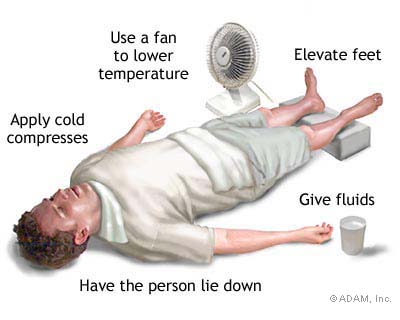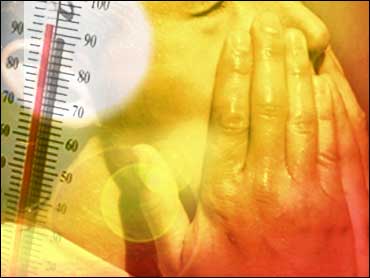Heat Stroke and Heat Exhaustion
 Symptoms of Heat Stroke
Symptoms of Heat Stroke
The symptoms of heat stroke often appear quite suddenly and are characterized by collapse, delirium or coma. Certain characteristics include diminished sweating; dry, hot skin and flushed face; headaches, dizziness and irritability, nausea and vomiting; an extra high body temperature ranging from 105 to 110 degrees; and an extremely rapid pulse.
How is Heat Stroke Treated?
Heat stroke is a medical emergency that can be fatal if not properly and promptly treated. Seek medical attention immediately. In the meantime, attempts should be made to lower the body temperature. This can be done by moving the patient to a cool or shady area; spraying, sponging or showering them with water; and rapid fanning. The goal is to get the victim’s temperature within the 101 and 102 degree Fahrenheit range.
What are the Differences Between Heat Stroke and Heat Exhaustion?
Heat exhaustion is a slightly less serious condition that can develop after exposure to high temperatures and inadequate or unbalanced replacement of fluids. The symptoms are different from heat stroke in that the patient’s skin normally is cold, clammy and covered with perspiration instead of hot and dry skin. The face is pale; other symptoms may include a headache, loss of appetite, drowsiness, cramps of the limbs and abdominal muscles, dilation of the pupils, faintness or unconsciousness.
How is Heat Exhaustion Treated?
Seek medical attention immediately if symptoms are severe, or the victim has heart problems or high blood pressure.
- Lie victim down and elevate feet
- Give fluids -cool, non-alcoholic beverages
- Apply cold compresses to head, neck and other exposed areas
- Use fan if available
- Consult a physician for further direction

